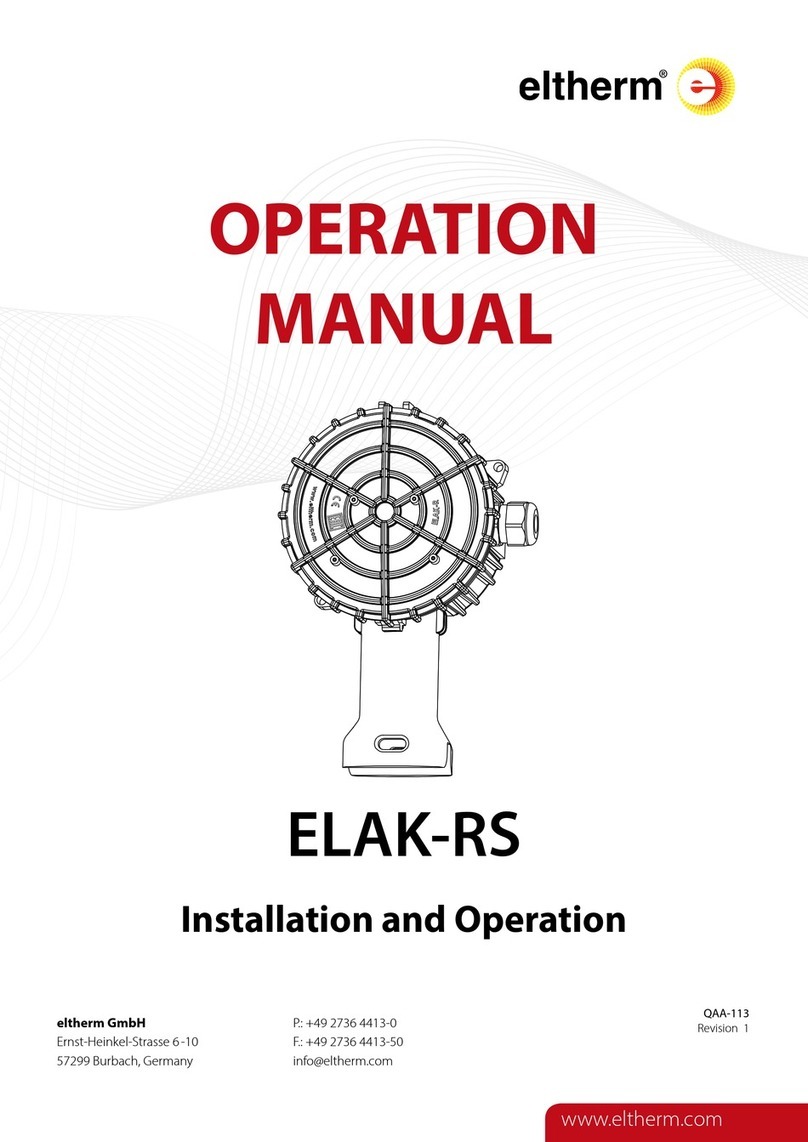
Operating Manual Heat Tracing System
ELK-MI-AY825 / ELK-MI-VA
In Hazardous Locations (Ex)
Page 2 of 21
Inhalt
2. System Components ...................................................................................................... 3
2.1 The Single Core Heating Systems comprise the following components:............................ 3
2.2 The Twin Core Heating Systems comprise the following components:.............................. 4
3. Technical Data ............................................................................................................... 4
4. Available Resistances ..................................................................................................... 5
4.1 ELK-MI-VA and VA-T ............................................................................................................ 5
4.2 ELK-MI-AY825 ...................................................................................................................... 7
4.3 ELK-MI-AY825 T ................................................................................................................... 8
5. Marking ......................................................................................................................... 9
6. Restrictions on thickness and material of thermal insulation........................................... 9
7. Heating Circuit Design .................................................................................................... 9
8. Location of temperature sensors .................................................................................... 9
8.1 Temperature controllers ..................................................................................................... 9
8.2 Temperature limiters......................................................................................................... 10
9. Summary of Conditions of Safe Use as per Type Approval Certificate............................. 11
10. Installation of the Heat Tracing System ELK-MI-**** Ex................................................. 12
10.1 Application......................................................................................................................... 12
10.2 Receipt of Goods ............................................................................................................... 12
10.3 Storage .............................................................................................................................. 12
10.4 Length of Heating Circuit................................................................................................... 12
10.5 Protective Measures.......................................................................................................... 13
10.6 Heater Installation............................................................................................................. 13
10.7 Test and Commissioning.................................................................................................... 15
10.8 Operation and Maintenance: ............................................................................................ 16
11.Installation of ELK-MI Trace Heaters ............................................................................. 17
11.1 Typical Installation of Mineral-Insulated Trace Heaters on Pipes..................................... 17
11.2 Typical Installation of Mineral-Insulated Trace Heater on Flanges................................... 18
11.3 Typical Installation of Mineral-Insulated Trace Heater on Elbows ................................... 18
11.4 Typical Installation of Mineral-Insulated Trace Heater on Valves .................................... 19
11.5 Typical Installation of Mineral-Insulated Trace Heater on Pumps.................................... 19
12. Installation of Gland..................................................................................................... 20
12.1 Design and Technical Data ................................................................................................ 20
12.2 Installation......................................................................................................................... 20
12.3 Operation and maintenance ............................................................................................. 21






























